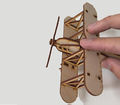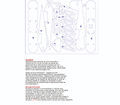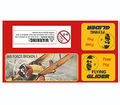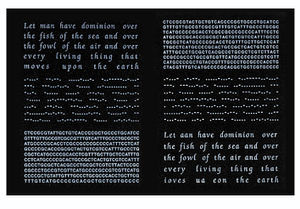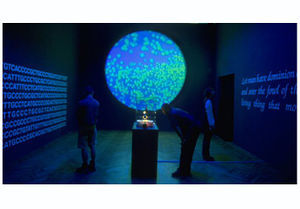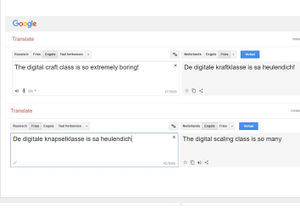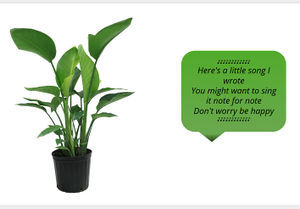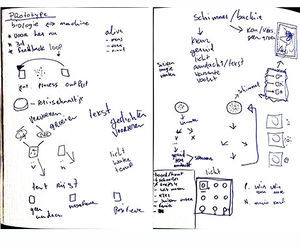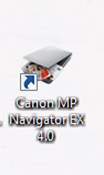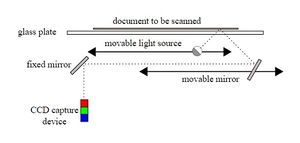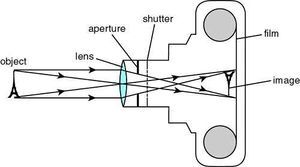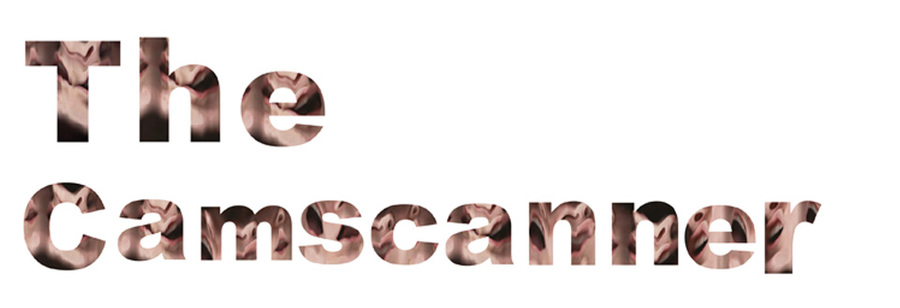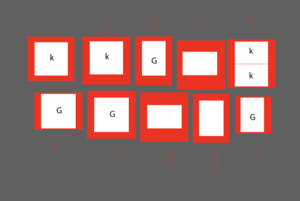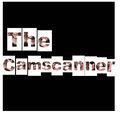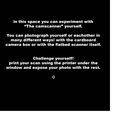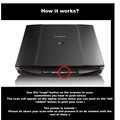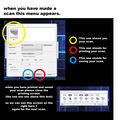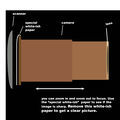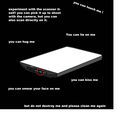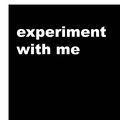Difference between revisions of "User:Jeemzz"
| (146 intermediate revisions by the same user not shown) | |||
| Line 1: | Line 1: | ||
| − | + | [[File:Digital craft titel nieuww .jpg]] | |
| + | <br> | ||
| + | <br> | ||
| + | Jamie Deen - 0930546 - Fine Art & Design Teacher Training - 2018 | ||
| + | <br> | ||
| + | <br> | ||
| + | <br> | ||
| − | + | ||
| − | + | = '''Digital craft 2nd year mini practice''' = | |
| + | The assignment was to choose a work in the Boijmans. <br> | ||
| + | We will use this work as an inspiration source. <br> | ||
| + | Starting a project with a trip is immediately a plus for me! <br> | ||
| + | We had to make a copy of this work and a transformation. <br> | ||
| + | This means that we make a work that is entirely derived from the chosen work from the Boijmans <br> | ||
| + | and one that we make with the work of Boijmans in mind. | ||
| + | |||
| + | <br> | ||
| + | <br> | ||
[[file:900x450 2942.jpg]] | [[file:900x450 2942.jpg]] | ||
<br> | <br> | ||
| − | The painting I chose is called “Late visitors to pompeii” | + | <br> |
| + | <br> | ||
| + | '''The painting I chose is called “Late visitors to pompeii”''' | ||
| + | |||
| + | The artist behind this painting called Carel Willink. <br> | ||
| + | He was a Dutch painter who preferred to call his style imaginary realism instead of magic realism. <br> | ||
| + | I can understand the fact he preferred that name taking this painting as an example, <br> | ||
| + | it’s almost surrealistic it’s a surreal situation and at the same time it’s a mirror of our society today. | ||
| + | <br> | ||
| + | <br> | ||
| + | ==History time!== | ||
| + | <br> | ||
| + | <br> | ||
| + | Surreal as the artist himself, Willink turnt out to be a dramatic romanticus I think... Willink married four times! <br> | ||
| + | His first marriage in 1927 with Mies van der Meulen (1900-1988) dissolved after a year, but his second in 1930 with Wilma Jeuken (1905-1960) lasted until her death of a brain tumor. <br> | ||
| + | Okay I’m sorry this seems normal right? A passionate and strong man that gets himself together after the death of his wife. <br> | ||
| + | But in 1962 he started a relationship with the 38-year younger Mathilde de Doelder, whom he married in 1969. <br> | ||
| + | Their eccentric relationship made them a mainstay in the Dutch gossip columns of the time. In 1975 Willink started an affair with the 44-year younger sculptor Sylvia Quiël. <br> | ||
| + | So what happened over there !? He became an unfaithful man. In 1977 he divorced De Doelder, who either committed suicide or was murdered 4 months later. The same year he married Quiël. WEIRD! <br> | ||
| + | <br> | ||
| + | <br> | ||
| + | I have to admit his life sounds like an amazing story full of love, creativity, harsh reality and deaths. <br> | ||
| + | This man must have been very interesting, at least he already is in my eyes. I wonder what was going through his head at the moment of creating this very painting.<br> | ||
| + | <br> | ||
| + | <br> | ||
| + | Late visitors of Pompeii from 1931. Shows us the southern Italian volcanic landscapes and some classical ruins. <br> | ||
| + | the empty space and the pronounced perspective combined with the decor for an ironic-anecdotal event, creates a surreal image. <br> | ||
| + | The utterly lost and senseless presence of a number of nicely dressed twentieth-century civil men, complete with cigar, <br> | ||
| + | bowler hat, with Willink on the left in a self-portrait looking over his shoulder reciting the viewer, giving us this troubled look. | ||
| + | |||
| + | |||
| − | |||
| + | <br> | ||
<br> | <br> | ||
[[File:Visitorsss.jpg]] | [[File:Visitorsss.jpg]] | ||
<br> | <br> | ||
| − | + | <br> | |
| − | Looking at this painting I am overwhelmed with confusion. Is it possible that we were already so individualistic in 1931, that our society was already so antisocial and closed? When a bomb explodes, we do not look at each other, as if we ourselves have nothing to do with it. we are solidly melting in our own egos. | + | Looking at this painting I am overwhelmed with confusion. <br> |
| − | + | Is it possible that we were already so individualistic in 1931, that our society was already so antisocial and closed? <br> | |
| + | When a bomb explodes, we do not look at each other, as if we ourselves have nothing to do with it. we are solidly melting in our own egos. | ||
| + | <br> | ||
<br> | <br> | ||
| Line 25: | Line 72: | ||
[[File:Schilderij 3 .jpg]] | [[File:Schilderij 3 .jpg]] | ||
<br> | <br> | ||
| + | <br> | ||
| + | In order to clarify the feeling I got from the painting, I have photoshopped it a bit. <br> | ||
| + | I force the men to look at each other while a volcano erupts behind them. <br> | ||
| + | I force them to no longer ignore each other. <br> | ||
| + | Then I let them point to each other. <br> | ||
| + | |||
| + | I believe that we live in a society in which we constantly blame each other for everything and everything but never find ourselves responsible. <br> | ||
| + | We find it so easy to point to others or say "yes, but I did not do that". <br> | ||
| + | When you see someone falling on the street, there are most of the time only 2 out of 20 people who will stop and help. <br> | ||
| + | When there is a verbal battle or fight we act like we do not hear anything.<br> | ||
| + | Why do we do this !? Why do we turn our backs on situations, why do we find it so scary to get involved in something? <br> | ||
| + | It's so damn easy to blame others, and we turn our backs on our problems. pointing out fingers.. I didn’t do it, he/she did! | ||
| + | <br> | ||
| + | <br> | ||
| + | <br> | ||
| + | |||
| + | ==Copy== | ||
| + | [[File:Copy image .jpg]] | ||
| + | <br> | ||
| + | I made a video in this same posture to copy what I created from the painting. <br> | ||
| + | I deliberately did not take a picture because it seemed more interesting to me to keep it alive. <br> | ||
| + | By placing ourselves as static as in the painting, the small movements of blinking eyes and breathing, I copy the alienated and illogical effect of the painting. | ||
| + | |||
| + | Keeping your arm up like this is a punishment in itself. <br> | ||
| + | I (left) am the only one who looks into the camera just as the artist Carel Willink has placed himself in his painting on the left. <br> | ||
| + | I look at the viewer just as Willink looked at the viewer. almost questioning, "Is this what you want?" <br> | ||
| + | I will present the video in a frame with a projector so that it looks like it is a photo. <br> | ||
| + | That way I can create confusion just as I got confused at the original painting. <br> | ||
| + | <br> | ||
| + | <br> | ||
| + | ==Test 1 2 3 Test== | ||
| + | <br> | ||
| + | |||
| + | To further discover what I want with this atmosphere, I have done tests. <br> | ||
| + | I have taken pictures of people who refuse to look at each other. <br> | ||
| + | That is the point that held me so firmly in the painting. <br> | ||
| + | The ignoring of each other and each other’s silence is something unbearable, <br> | ||
| + | this gripped me so firmly that I wanted to translate this into my transformation. | ||
| + | <br> | ||
| + | <br> | ||
| + | [[File:Testjes .jpg]] | ||
| + | <br> | ||
| + | |||
| + | ==Transform Transforming Transformed== | ||
| + | <br> | ||
| + | <br> | ||
| + | In the end I chose to involve the viewer in my presentation. <br> | ||
| + | I wanted to make the feeling of ignoring appear in my photos. <br> | ||
| + | At first I did not know how I was going to create that feeling in a picture, I wanted to work in the direction of my tests. <br> | ||
| + | Then I came to the insight that i want to ignore the viewer. How annoying will it be to go to an exhibition where the work literally turns its back on you. <br> | ||
| + | <br> | ||
| + | Without any studio experience I went into the photography studio and I made pictures of the back of people's head.... | ||
| + | <br> | ||
| + | <br> | ||
| + | <br> | ||
| + | <br> | ||
| + | <br> | ||
| + | [[File:1.jpg]] | ||
| + | [[File:2.jpg]] | ||
| + | [[File:3.jpg]] | ||
| + | [[File:4.jpg]] | ||
| + | [[File:5.jpg]] | ||
| + | [[File:6.jpg]] | ||
| + | <br> | ||
| + | <br> | ||
| + | <br> | ||
| + | <br> | ||
| + | ==Presentation== | ||
| + | <br> | ||
| + | <br> | ||
| + | [[File:Presentatie foto 1 .jpg]] <br> | ||
| + | <br> | ||
| + | [[File:Presentatie foto 2 .jpg]] <br> | ||
| + | <br> | ||
| + | [[File:Presentatie foto 3 copy .jpg]] <br> | ||
| + | <br> | ||
| + | <br> | ||
| + | <br> | ||
| + | '''Reflection''' | ||
| + | In this practice I mainly learned to work freely and work in a very short time. <br> | ||
| + | I was able to pick up on a theme that I have already worked on a bit. <br> | ||
| + | Before this practice I worked in the theme of the relationship between human and nature and human and human. <br> | ||
| + | And now I was able to focus myself at the relationship between human and human in the social field. <br> | ||
| + | I also learned how to work in the photo studio which I found extremely valuable.<br> | ||
| + | I think it is a valuable theme to dive into for me as a future teacher, the social contact and the way we treat each other. <br> | ||
| + | What I regretted is that we learned little theory or practical stuff from the teachers themselves because of the few contact moments, <br> | ||
| + | I hope that this might happen more later. My preference is also in the practice Digital craft, purely because I could let myself go with the flow immediately. <br> | ||
| + | <br> | ||
| + | <br> | ||
| + | <br>''' | ||
| + | '''What is the theme I am investigating?'''a disconnection between human and human <br> | ||
| + | '''What is my research question?'''do we accept this? <br> | ||
| + | I also wondered in my research whether this was already happening since the painting dates from 1931. <br> | ||
| + | '''How am I structuring my research?''' I work in the indicated steps. I first started to investigate my painting. <br> | ||
| + | After that I made a video, during the making of the video. <br> | ||
| + | I also did tests with photography. In the end I work kind of as a action, reaction, action, reaction. <br> | ||
| + | '''What tools or methods could I/will I use to conduct my research?''' See the answer above. I like to work by diving into it and doing it. <br> | ||
| + | '''What is the foreseen result?''' When I started this work, I thought I would work it out in a performance (that I would still like to do). <br> | ||
| + | My result, however, is different than expected because I came to new insights during my tests. <br> | ||
| + | '''What is the difference between my foreseen result and the result which came through the process?''' See the answer above. <br> | ||
| + | It is good and okay that things change within a process. But to be honest, I could have gone on so many other ways if I had more time.<br> | ||
| + | '''Is 1. - 6. relevant?''' Yes it is, we have a lot of criticism on our social level, on communication and connecting with each other in this society.<br> | ||
| + | <br> | ||
| + | <br> | ||
| + | <br> | ||
| + | <br> | ||
| + | <br> | ||
| + | = '''Digital crafts 3rd year''' = | ||
| + | [[File:Digi crafts 3rd year.jpg]]<br> | ||
| + | <br> | ||
| + | <br> | ||
| + | <br> | ||
| + | |||
| + | ==Critical Making exercise== | ||
| + | <br> | ||
| + | <br> | ||
| + | <br> | ||
| + | [[File:Card assignment 1.jpg]] | ||
| + | <br> | ||
| + | <br> | ||
| + | - Reimagine an existing technology or platform using the provided sets of cards.-<br> | ||
| + | <br> | ||
| + | <br> | ||
| + | In this assignment I have worked with 2 classmates and 2 students of graphic design.<br> | ||
| + | We looked at the cards with the whole group and shared our favorites.<br> | ||
| + | Then we started making combinations, we came to the challenge:<br> | ||
| + | <br> | ||
| + | '''Create an painful or stressful version of a DIY kit using wood''' <br> | ||
| + | <br> | ||
| + | <br> | ||
| + | We wanted to make a DIY kit because we had fun and frustrating memories of DIY kits ourselves.<br> | ||
| + | We chose to mix the roles, so the graphic designers started working with the laser cutter<br> | ||
| + | and we started working on the (graphic)design aspect.<br> | ||
| + | The laser cut plan was designed to be cut on an 4 mm piece of wood, but we used a 3 mm one.<br> | ||
| + | So when somebody would put the plane together the pieces would not completely fit.<br> | ||
| + | Next to that I made a useless manual it says things like (‘click piece one of the wing to piece one and after<br> | ||
| + | that connect piece one mainboard to one till you hear a click’)<br> | ||
| + | When you finally finished putting the plane together and want to make it fly,<br> | ||
| + | the plane would fall apart. In the end, we were able to create a very frustrating product with this group.<br> | ||
| + | <br> | ||
| + | <br> | ||
| + | <gallery> | ||
| + | File:8O8rnBq.gif| step 1 | ||
| + | File:Plain.jpg| step 2 | ||
| + | File:Handleiding.jpg| step 3 | ||
| + | File:Verpakking.jpg| step 4 | ||
| + | </gallery> | ||
| − | + | ==Cybernetic Prosthetic== | |
| − | + | [[File:Kac, E. Genesis.jpg|300px|right|thumb|an artist gene Eduardo Kac ]] | |
| − | + | [[File:Kac, E. Genesis two.jpg|300px|right|thumb|an artist gene Eduardo Kac ]] | |
| − | + | [[File:Digicraft translate.jpg|300px|right|thumb|google translate fail]] | |
| − | + | [[File:Another idea.jpg|300px|right|thumb|singing plant?]] | |
| − | we | + | [[File:Eerste schets idee.jpg|300px|right|thumb|Mindmap/first sketch]] |
| + | <br> | ||
| + | <br> | ||
| + | We started our project by researching the artist we discussed in the class of Ivan.<br> | ||
| + | The artist that struck us the most was "Eduardo Kac". Ivan mentioned the dna flower and we did more research about him.<br> | ||
| + | We came on a project of his, where he is creating an artist gene.<br> | ||
| + | This gene was created by translating a sentence from the bible, Genesis, into Morse Code, and converting<br> | ||
| + | the Morse Code into DNA base pairs according to a conversion principle specially developed for this work.<br> | ||
| + | <br> | ||
| + | <br> | ||
| + | '''Google translate fails?''' <br> | ||
| + | So this project made us think about Google translate fails.<br> | ||
| + | When you translate a sentence to another language and then translate it to its original language something different comes out of it.<br> | ||
| + | Sometimes it can be quite funny or poetic. But this was infect our link that made us think about esthetic art that we as human don’t have complete control over.<br> | ||
| + | We wanted to create something that decides and or can speaks for itself.<br> | ||
| + | So first we talked about an idea of a plant that could sing songs when it is happy or sad.<br> | ||
| + | But soon it felt a bit cheesy already.<br> | ||
| + | <br> | ||
| + | <br> | ||
| + | '''Schimmelderij''' | ||
| + | <br> | ||
| + | Then we decided that we want to focus more on a organism that makes it own decision with a esthetic outcome.<br> | ||
| + | From the four catagories of organism (plants, animals, fungi and bacteria), the fungus was uniquely and interesting to us.<br> | ||
| + | Fungi or mold also live their own lives and certainly make their own choices. That is why we researched how mold works,<br> | ||
| + | how it grows and how it doesn't grow. In this study, we discovered that mold can be stimulated by heat and delayed or even stopped by cold.<br> | ||
| + | With this information we devised a loop system.<br> | ||
| + | |||
| + | |||
| + | <gallery> | ||
| + | File:Speeding up.jpg| How to manipulate the process | ||
| + | File:Delaying process.jpg| How to manipulate the process | ||
| + | File:Klariart.jpg| inspiration klari art | ||
| + | File:Let it mold let it mold let it mold.jpg| Create the mold | ||
| + | File:Mold stinks.jpg| investigate the mold | ||
| + | File:Schimmel collage.jpg| beautifull mold? | ||
| + | File:Sketch schimmelderij.jpg| make a sketch of schimmelderij | ||
| + | </gallery> | ||
| + | <br> | ||
| + | <br> | ||
| + | '''Making the frame'''<br> | ||
| + | After making the mold, we started designing a frame.<br> | ||
| + | The intention was to really freeze the containers with mold above and below the snowflake.<br> | ||
| + | And giving the bowls above and under the sun extra warmth.<br> | ||
| + | Then the frame would have looked like this:<br> | ||
| + | A lot of mold due to sun - slightly less mold with normal temperature - little mold due to freezing.<br> | ||
| + | The idea of an abstract painting based on mold that forms itself through a rhythm system <br> | ||
| + | in heat and cold release seemed very beautiful and incredibly interesting.<br> | ||
| + | For example, the rhythm in this system could be linked to music and that's how something very unique comes about.<br> | ||
| + | <br> | ||
| + | [[File:Schimmelderij done.jpg]] | ||
<br> | <br> | ||
| + | <br> | ||
| + | '''Reflection'''<br> | ||
| + | <br> | ||
| + | I now know how mold works and that you can even catch mold with the bacteria in the air.<br> | ||
| + | I would have liked to find out which fungi gives what kind of shape and color<br> | ||
| + | and whether you can create a kind of mold-book in this way with foto's and "how it's made".<br> | ||
| + | In the process however, I found out that certain smells were very intense and that a solution should be found for the smells <br> | ||
| + | if this project wil ever have a follow-up. <br> | ||
| + | This project brought me new ideas and this was certainly also due to the feedback that was given after the presentation.<br> | ||
| + | We got so many opportunities with our subject back from the group, such as the sample book of fungi/mold and artists that mimic fungi.<br> | ||
| + | These kinds of insights give inspiration and ensure that this project does not close with a closed door but with more open doors to different possibilities.<br> | ||
| − | [[File: | + | ==From Devices to systems== |
| + | <br> | ||
| + | [[File:Printing and scanning.jpg]] | ||
| + | <br> | ||
| + | From Devices to systems Sensors and sensitivity training.<br> | ||
| + | You will open the 'black box' of a technical device in an anatomical machine learning lesson,<br> | ||
| + | and you will also dissect and analyse a concrete instance of a complex system at work. How do devices and networked systems interact?<br> | ||
| + | Document and research all of the parts, how they work, where they come from. Redesign and add new circuits.<br> | ||
| + | Put it back together with a new function and added sensor feedback loops. The basic electronics should be fully functional.<br> | ||
| + | |||
| + | Last year in winter, Michelle (my friend and classmate) fell in love, with a copier.<br> | ||
| + | She started scanning and by accident she moved one of her prints on the glass.<br> | ||
| + | So than she bought her own printer (Josephine) and now she accepted me in her relationship with Josephine.<br> | ||
| + | For this assignment we have experimented with the copy machine and scanner.<br> | ||
| + | Michelle had already gained some experience and also let me experience this same amazement with this machine.<br> | ||
| + | We went to the dark room and tested how light influenced a print.<br> | ||
| + | After that we tested how to catch movement on a print.Ideally, we wanted to make 3D (full body)scanner out of Josephine.<br> | ||
| + | After our test, we decided to open her up. We wanted to see what happened inside of her while she was scanning.<br> | ||
| + | And at one point, we succeeded. Until Michelle, murderd Josephine with impatience an brutal strength.<br> | ||
| + | We tried to remove the scan part of the printer from the print part of the printer but unfortunately we killed te most important communication belt.<br> | ||
| + | May Josephine rest in cyberspace.<br> | ||
| + | <br> | ||
| + | [[File:5bc4a1d9f1240993823515.gif]] [[File:5bc4a04c3d78a702775658.gif]] [[File:5bc4a11133b31150493227.gif]]<br> | ||
| + | <br> | ||
| + | Although we did kill Josephine, she taught us a lot.<br> | ||
| + | In this project I found out that I have not finished with the world of scanners and printers.<br> | ||
| + | I want to continue investigating the possibilities that exist with scanners,<br> | ||
| + | and I especially want to create that 3d (full body) scan in one way or another.<br> | ||
| + | My plan is to arrange a separate scanner and printer that communicate together.<br> | ||
| + | |||
| + | ==Essay== | ||
| + | My craft and my approach are divided into two categories,<br> | ||
| + | one is my own visual work and one is my approach as a teacher or educator. <br> | ||
| + | Now it is fortunately pretty close the both approaches but it is still difficult to describe them in one.<br> | ||
| + | <br> | ||
| + | During my study in Fine Art & Design Teacher Training at the WDKA, I focus on the meaning of art education, <br> | ||
| + | and what role I can play in this. Who do I want to be as an educator and what do I find important to teach <br> | ||
| + | (and to learn from) to the future generation. I also have a lot of interest in museum education, which is another approach.<br> | ||
| + | All in all, I find art education very important, because it was very important to me. <br> | ||
| + | In my time at Grafisch Lyceum Rotterdam I really changed as a person not only because I grew up and grew older but also because <br> | ||
| + | I went into a world with people who challenged me in a creative environment full of influences and critical inquiries. <br> | ||
| + | I sincerely believe that in this environment I have really found myself and that I have really learned to understand myself.<br> | ||
| + | In art education you learn and develop multiple skills and personal development during challenging creative projects.<br> | ||
| + | Things like, imagination, Reflecting, observing or analyzing, expressing yourself or express yourself. <br> | ||
| + | You learn about the world within the school and the world beyond school, in the past and present.<br> | ||
| + | <br> | ||
| + | Connecting disciplines and observing the behavior and attitudes of the people and / or pupils around me is something that interests me.<br> | ||
| + | I've always done it unconsciously, just looking at people and wondering why they do what they do and what they might think in all those <br> | ||
| + | thousands of millions of heads you see passing by everyday every week. Learning to read behavior and learn to understand behavior is <br> | ||
| + | something that fits very well within my major. These interests also make me personally very critical and reflective to myself because<br> | ||
| + | I am always a person who I can read and observe in my own behavior.<br> | ||
| + | <br> | ||
| + | In addition, I find it important to continue to develop in my own visual language. The tools that I am working on a lot now are photography,<br> | ||
| + | illustrating, the digital world, writing, materials research, and painting but preferably in large format. In my own work I am very busy with <br> | ||
| + | concept formation and narrative work, I do in combination with observations and analyzing people's behavior and demands.<br> | ||
| + | If I need a tool that I do not yet know or master, I will look for ways to learn this, through people who already master it or via the internet.<br> | ||
| + | A very important tool is the tool of discovery and curiosity. I am someone who likes to go out for inspiration.<br> | ||
| + | In digital craft, for example, I really dived in by going to Cinekid and the Exposition of Ryoji Ikeda. With these kind of trips I can let myself be immersed<br> | ||
| + | and really come into the vibe I want to be in. At these exhibitions I have seen digital craft in a finished form, especially cinekid appealed to me because it was super interactive.<br> | ||
| + | You do not need much to amaze people, your product does not have to have a complicated concept, sometimes the visitors amaze you more with their experiences and behavior towards the interactions.<br> | ||
| + | <br> | ||
| + | [[File:Cinekid.jpg]] | ||
| + | <br> | ||
| + | In digital craft, I try to challenge myself and to immerse myself in the automation of the current world and the significance of this as a human being.<br> | ||
| + | Working with electricity is fairly new for me but in my opinion, it is very important to get involved in this and take part in art education.<br> | ||
| + | I think it's important to be up-to-date myself so that I can treat, research and question these kinds of subjects with my students.<br> | ||
| + | Digitization is something that applies to everyone. I myself experienced at a rapid pace how the smartphone originated and has grown, <br> | ||
| + | just like a part of the computer revolution. We used to have a computer in the house that I and my sister were allowed to use every day for max up to an hour,<br> | ||
| + | nowadays everyone has their own computer and we use mini-forms such as the smartphone all day long. <br> | ||
| + | These kinds of changes and developments and their effect on us as a human being is a very interesting thing to me. <br> | ||
| + | The teenagers of today (and also young adults as myself) live in a bizarre world where everything goes very fast, I wonder what kind of effect this has and how it affects us.<br> | ||
| + | <br> | ||
| + | The digital world seems to be one big playground.<br> | ||
| + | There are no limits anymore: on the computer one can watch television and the mobile phones are getting bigger and bigger,<br> | ||
| + | so that these can also function as a TV with apps like Netflix. Your best friend is your smartphone nowadays.<br> | ||
| + | And I want to immerse myself in this paradise like playground of the digital world full of codes, robots and surprises. <br> | ||
| + | We live incredibly digitally but if you provide me with a device (like the Blackbox assignment) I would not understand how it can work as it works. <br> | ||
| + | So, on the one hand it is very logical and something that we cannot think away but on the other hand we are also pretty far <br> | ||
| + | away from this digital thing because as an individual we do not immediately know how such a computer does its job.<br> | ||
| + | <br> | ||
| + | As for my concrete examples of contemporary practitioners.<br> | ||
| + | I've been obsessed with Melanie Bonajo's work for a while,<br> | ||
| + | <br> | ||
| + | [[File:Melanie bonajo.jpg]] | ||
| + | <br> | ||
| + | her approach and how she takes you into stories and visions I find enchanting. <br> | ||
| + | To mention a concrete example, I want to link to the videoclip from one of her films. The song is called "Secret Robots" <br> | ||
| + | in which Melanie is turned into a robot she moves like a robot and acts like a robot and in this way, she experiences what it is like to live as a machine. <br> | ||
| + | This clip made such an impression on me that I literally teared up while watching this video. <br> | ||
| + | The image that she creates with this is very intense and confronting to me, the lonely elderly who fully accept that people no longer <br> | ||
| + | want to pay attention to them in their own physical attention and they are now entertained and have to go through <br> | ||
| + | life with robots or mechanical machines to take away the loneliness. Can robots take away solitude? I wonder…<br> | ||
| + | <br> | ||
| + | After a conversation with Shailoh I was guided to the work of Pilvi Takala.<br> | ||
| + | [[File:Pilvi takala .jpg]]<br> | ||
| + | <br> | ||
| + | She is a great example and similar to how I like to work.<br> | ||
| + | I also like to ask questions and try to put myself in different roles in different ways in order to be able to experience, observe and analyze in several ways.<br> | ||
| + | Pilvi Takala investigates the social behavioral mechanisms within a specific situation, community or place. After this observing phase,<br> | ||
| + | a subtle intervention ensues whereby, as a relative outsider, she calls into question the unwritten rules of behavior that are considered self-evident and makes the hidden reality visible.<br> | ||
| + | <br> | ||
| + | What I find interesting in digital craft is the fact that we are so incredibly used to technologies in our environment. <br> | ||
| + | We find it quite normal that a light in a scanner reads and digits your documents, that it can translate something 3d into 2d. <br> | ||
| + | We do not think it's strange that we can make videocalls, that we can see and hear each other while we are actually miles apart. <br> | ||
| + | But how does it work? How can we see each other while we are so far away from each other? We are so used to it when we do not even know how it is possible and we accept that.<br> | ||
| + | The wow effect is gone and sometimes it is good to take a step back and ask questions about things that seem very normal now.<br> | ||
| + | I just really adore and love to ask questions I always did, and to be honest, I was punished as a child for the fact that I asked so many questions.<br> | ||
| + | It was seen as a fear of failing and insecurity and also as an annoying smart ass. But I think it's important to stop, <br> | ||
| + | take a step back and take another look at things and not just accept that things are the way they are.<br> | ||
| + | <br> | ||
| + | As a teacher I find it important that I have experienced many different things to be able to say for myself what I think is important to pass on.<br> | ||
| + | That is why I became so enthausiastic about digital craft, which gave me the chance to discover how we deal with the digital life of 2018.<br> | ||
| + | The fact that we no longer have astonishment for things that contain amazement is something that I will definitely take with me in my teaching.<br> | ||
| + | |||
| + | ==Cartography of Complex Systems & the Anthropocene== | ||
| + | |||
| + | '''mapping assignment''' | ||
| + | [[File:Canon-MP-Navigator-EX-for-CanoScan-LiDE-110 1.jpg|300px|right|thumb|my dear scanner]] | ||
| + | [[File:Icoon scanner.jpg|300px|right|thumb|Icon driver programme]] | ||
| + | [[File:Scanner-functionality.jpg|300px|right|thumb|how a scanner works]] | ||
| + | [[File:Camera.jpg|300px|right|thumb|how a camera works]] | ||
| + | |||
| + | In this assignment I want to dig into the world of the scanner.<br> | ||
| + | I want to know how the scanner works and I especially want to compare what the big<br> | ||
| + | differences are between a scanner and a digital camera.<br> | ||
| + | To be able to do this properly, I first have to analyze the scanner<br> | ||
| + | and a digital camera itself. I go to the web and talk to professionals about these 2 items. <br> | ||
| + | <br> | ||
| + | <br> | ||
| + | '''scanner''' | ||
| + | <br> | ||
| + | <br> | ||
| + | The basic principle of a scanner is to analyze an image and to process it in one way or another to a digital image.<br> | ||
| + | You can then change or improve the image, print it or use it on your web page. I really do think this is incredibly special,<br> | ||
| + | it is a pity that we as humans living in 2018 no longer see this as something special.<br> | ||
| + | The idea that I can place an object on a glass plate, a light then scans it and the thing that I just had in my hands<br> | ||
| + | suddenly appears on my screen is fascinating right!?<br> | ||
| + | <br> | ||
| + | <br> | ||
| + | Parts of a typical flatbed scanner include:<br> | ||
| + | <br> | ||
| + | • Charge-coupled device (CCD) array<br> | ||
| + | • Mirrors<br> | ||
| + | • Scan head<br> | ||
| + | • Glass plate<br> | ||
| + | • Lamp<br> | ||
| + | • Lens<br> | ||
| + | • Cover<br> | ||
| + | • Filters<br> | ||
| + | • Stepper motor<br> | ||
| + | • Stabilizer bar<br> | ||
| + | • Belt<br> | ||
| + | • Power supply<br> | ||
| + | • Interface port(s)<br> | ||
| + | • Control circuitry<br> | ||
| + | <br> | ||
| + | '''These are the steps a scanner goes through when a document is scanned:'''<br> | ||
| + | <br> | ||
| + | • The document is placed on the platen glass and the lid is closed.<br> | ||
| + | The inside of the cover in most scanners is flat white just like my scanner.<br> | ||
| + | The cover offers a neutral background that the scanning software can use as a reference point for determining<br> | ||
| + | the size of the document being scanned. With most flatbed scanners, you can remove the cover to scan a voluminous object,<br> | ||
| + | such as a page in a thick book.<br> | ||
| + | • A lamp is used to illuminate the document. This goes at a slow pace.<br> | ||
| + | • The complete mechanism (mirrors, lens, filter and CCD array) forms the scan head.<br> | ||
| + | The scan head is moved slowly over the document by a strap attached to a stepper motor.<br> | ||
| + | The scan head is attached to a stabilizer bar to ensure that there is no fluctuation or<br> | ||
| + | deviation in the pass. Pass means that the scan head has completed a full scan of the document.<br> | ||
| + | • The image of the document is reflected by a slanted mirror to another mirror.<br> | ||
| + | In some scanners there are only two mirrors while others use an approach with three mirrors.<br> | ||
| + | Each mirror is slightly bent to focus the image that it reflects on a smaller surface.<br> | ||
| + | • The last mirror reflects the image on a lens. The lens focuses the image through a filter on the CCD array.<br> | ||
| + | The filter and lens arrangement vary based on the scanner. Some scanners use a three pass scanning method.<br> | ||
| + | Each pass uses a different color filter (red, green or blue) between the lens and CCD array.<br> | ||
| + | After the three passes are completed, the scanner software assembles the three filtered images into a single full-color image.<br> | ||
| + | <br> | ||
| + | <br> | ||
| + | On your computer, you need software, called a driver, that knows how to communicate with the scanner.<br> | ||
| + | My scanner has the Canon MP Navigator EX program that works as the driver. So This is the way my scanner communicates.<br> | ||
| + | A conversation between the computer program (driver) and the scanner which is linked via a USB cable to my computer,<br> | ||
| + | this makes it possible to let those two work together. <br> | ||
| + | Without the driver my scanner won’t do a thing, so I need these two devices.<br> | ||
| + | <br> | ||
| + | <br> | ||
| + | '''How does a camera (obscura) work'''<br> | ||
| + | The Camera Obscura is an ancient optical device. <br> | ||
| + | In its most basic form it is, quite simply, a dark room with a small hole in one wall.<br> | ||
| + | On the wall opposite the hole, an image is formed of whatever is outside. This image is upside-down (inverted) and back to front (laterally transposed).<br> | ||
| + | The size of the hole has a great effect on the picture that is being projected. A small hole produces a sharp image, which is dim, while a larger hole produces a brighter picture which is less well focused.<br> | ||
| + | This happens because light travels in straight lines, a property known as the rectilinear propagation of light.<br> | ||
| + | <br> | ||
| + | The big difference between a camera and a scanner is the fact that a scanner makes the photo with a moving light.<br> | ||
| + | This means that the photo is always made with a kind of super slow shutter speed. Because the scanner takes the picture from the left to the right<br> | ||
| + | very strange distortions can occur when you move during the picture taking. With a camera the picture is made in the whole of the image,<br> | ||
| + | if you use a slow shutter speed here you also see movement only in the whole of the image and not from left to right.<br> | ||
| + | A scanner can be seen as a camera that always flashes since a scanner does not record anything without its own light source,<br> | ||
| + | a camera can shoot without its own light. All in all there is a fair amount of difference between the two, but there are also many similarities and you will see that in my elaboration.<br> | ||
| + | ==Final project== | ||
| + | [[File:The camscanner def.jpg]] | ||
| + | [[File:Schermafbeelding 2018-12-16 om 13.44.53.png|300px|right|thumb|How to build the Camscanner lasercut plan]] | ||
| + | <br> | ||
| + | <br> | ||
| + | I became fascinated with the wow and ahh effect in this practice.<br> | ||
| + | This final project started with the blackbox assignment in which we separated a device (Josephine).<br> | ||
| + | We went to the dark room and tested how light influenced a print.<br> | ||
| + |
After that we tested how to catch movement on a print.Ideally, we wanted to make 3D scanner out of Josephine for a full body picture.<br>
| ||
| + | After our test, we decided to open her up. We wanted to see what happened inside of her while she was scanning.And at one point, we succeeded.<br> | ||
| + | Until Michelle, murderd Josephine with impatience an brutal strength.<br> | ||
| + | We tried to remove the scan part of the printer from the print part of the printer but unfortunately<br> | ||
| + | we killed te most important communication belt.
May Josephine rest in cyberspace.<br> | ||
| + | <br> | ||
| + | So I continued with the printer and scanner.<br> | ||
| + | I approached them separately, first an investigation into the scanner and then the printer.<br> | ||
| + | In the previous assignment we had experimented with light and movement, but that full body 3d scan never succeeded.<br> | ||
| + | This became my new focus point how to
extend the limits with this scanner.<br> | ||
| + | <br> | ||
| + | [[File:Scanner test.jpg]]<br> | ||
| + | <br> | ||
| + | I started testing how far I could go by first working with the flatbed scanner and continuing with light and composition.<br> | ||
| + | I had played with a scanner before, but the more you experimented the more new things come out.<br> | ||
| + | I used collage techniques with the scanner by laying paper on it with cutouts, which I then lay down myself on.<br> | ||
| + | I also tested how far the scanner can "see" with the light. What comes in the picture when, and how does this come into view, sharp or out of focus.<br> | ||
| + | <br> | ||
| + | <br> | ||
| + | Then the part of the 3d or a full body scan came up.<br> | ||
| + | I first tried to do this in puzzle pieces on the scanner.<br> | ||
| + | <br> | ||
| + | [[File:Puzzelenn.jpg]]<br> | ||
| + | <br> | ||
| + | Still, this was not yet what I had in mind, I still rememberd the feedback of the class when we presented our blackbox assignment...<br> | ||
| + | and the remark to build a camera obscura with it and that's how the camscanner was born.<br> | ||
| + | I build a camera obscura, the first one as a prototype and I have experimented with this first.<br> | ||
| + | I have never worked so deeply in the theme of photography so I needed help.<br> | ||
| + | I found that help with Menno, he taught me a lot about the working of a camera.<br> | ||
| + | We calculated the focal length and so I could make a new version of my camscanner.<br> | ||
| + | <br> | ||
| + | '''tools''' | ||
| + | <br> | ||
| + | The camera is made of tape, cardboard and a magnifying glass as lens.<br> | ||
| + | the tools I have used are working with a lasercut plan for the cardboard camera.<br> | ||
| + | Working with software that communicates to each other, this differs in mac and windows.<br> | ||
| + | <br> | ||
| + | <br> | ||
| + | Because I used to find it so cool to have my scan printed immediately without knowing what exactly I had scanned,<br> | ||
| + | I wanted to add this "woahhh" effect to my camscanner. The wow element in direct printing.<br> | ||
| + | To connect my scanner with a separate printer, I had to let the software communicate,<br> | ||
| + | again I had no experience with this and I needed help, I found that help with Brigit in the interaction station.<br> | ||
| + | In the end I managed to connect the printer and scanner and my scanner can immediately give instructions to my printer yay!<br> | ||
| + | <br> | ||
| + | <gallery> | ||
| + | File:The camscanner handleiding.jpg| Handleiding | ||
| + | File:The camscanner handleiding2.jpg| Handleiding | ||
| + | File:The camscanner handleiding3.jpg| Handleiding | ||
| + | File:The camscanner handleiding5.jpg| Handleiding | ||
| + | File:The camscanner handleiding6.jpg| Handleiding | ||
| + | File:The camscanner handleiding7.jpg| Handleiding | ||
| + | File:The camscanner handleiding8.jpg| Handleiding | ||
| + | </gallery> | ||
| + | <br> | ||
| + | '''presentation''' | ||
| + | <br> | ||
| + | I presented my Camscanner in this way because I did not want to keep this wow and ahh effect to myself.<br> | ||
| + | I have covered a project space with dirt bags and made an installation in this way. In the studio you find the scanner and the camera and a little instruction folder.<br> | ||
| + | On the laptop you can immediately click print after you made the scan and then the scan is forwarded to the printer outside the studio.<br> | ||
| + | This way you connect the viewer with the maker in a super fun way.<br> | ||
| + | I did not want to hang my photos as a presentation and only tell what I did.<br> | ||
| + | My goal is to take people into the research and let them experience it for themselves.<br> | ||
| + | They are part of my project and presentation infect they are my presentation.<br> | ||
| + | My presentation is not the space and not the photos that came out of it,<br> | ||
| + | but the collaboration of these two components and the visitors who create the work with my tools.<br> | ||
| + | <br> | ||
| + | Question I asked is '''
how can we re-astonish ourselves about something that has already melted into our system and is considered normal'''<br> | ||
| + | You do not have to discover the new wheel. you can find a new world in something that already exists by looking at it again.<br> | ||
| + | <br> | ||
| + | <br> | ||
| + | [[File:Advertentie.jpg]] | ||
| + | <br> | ||
| + | [[File:Scans presentatie.jpg]] | ||
| + | <br> | ||
| + | [[File:Rens ivar scan.jpg]]<br> | ||
| + | <br> | ||
| + | [[File:Camscan pelin.jpg]] | ||
| + | <br> | ||
| + | <br> | ||
| + | [[File:Presentatieee.jpg]] | ||
| + | <br> | ||
| + | '''reflection'''<br> | ||
| + | Just like in the 2nd year, I have been able to enjoy this practice again. <br> | ||
| + | Although it was a squished over full schedule for our department,<br> | ||
| + | I found a way to get the most out of this practice. I am very happy with what I have done and what I have learned,<br> | ||
| + | I needed a theme or research that I could deepen in. Hopefully our department<br> | ||
| + | will adjust the schedule in the future because if I am honest this was almost impossible to do for us...<br> | ||
| + | I have thrown a lot of leisure time and time from my major in the practice to get the best out of it.<br> | ||
| + | All in all, I have learned to make choices and deal with time pressure and a difficult schedule.<br> | ||
| + | I know that I have high demands on myself and that this is not always a good thing,<br> | ||
| + | but I also know that I continue to challenge myself this way and I learnd so much.<br> | ||
Latest revision as of 16:56, 2 January 2019
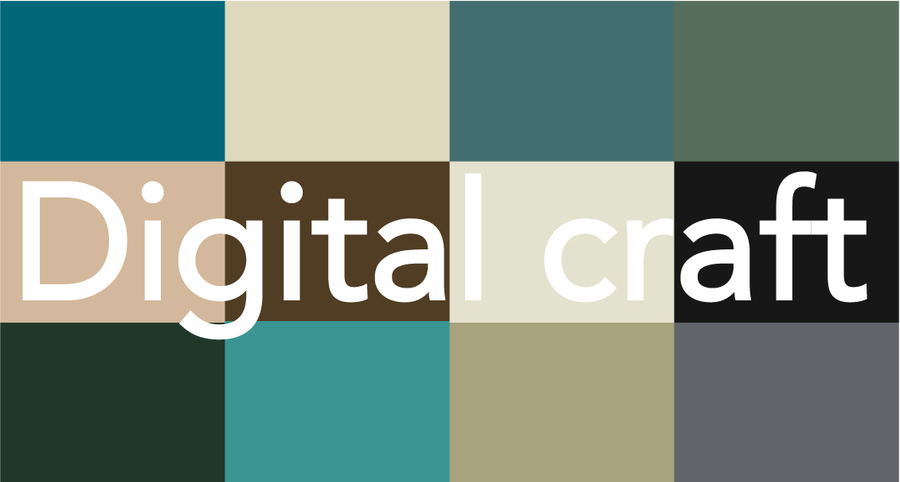
Jamie Deen - 0930546 - Fine Art & Design Teacher Training - 2018
Digital craft 2nd year mini practice
The assignment was to choose a work in the Boijmans.
We will use this work as an inspiration source.
Starting a project with a trip is immediately a plus for me!
We had to make a copy of this work and a transformation.
This means that we make a work that is entirely derived from the chosen work from the Boijmans
and one that we make with the work of Boijmans in mind.
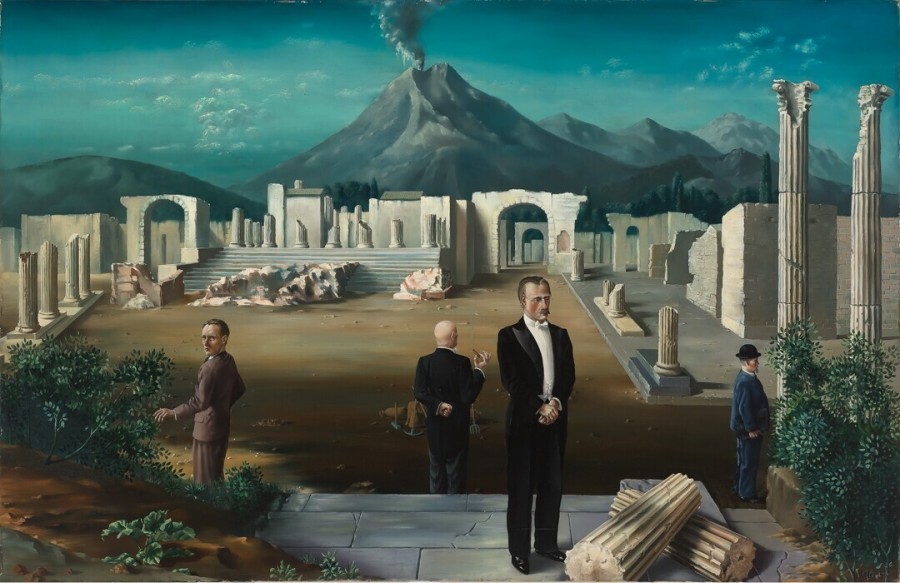
The painting I chose is called “Late visitors to pompeii”
The artist behind this painting called Carel Willink.
He was a Dutch painter who preferred to call his style imaginary realism instead of magic realism.
I can understand the fact he preferred that name taking this painting as an example,
it’s almost surrealistic it’s a surreal situation and at the same time it’s a mirror of our society today.
History time!
Surreal as the artist himself, Willink turnt out to be a dramatic romanticus I think... Willink married four times!
His first marriage in 1927 with Mies van der Meulen (1900-1988) dissolved after a year, but his second in 1930 with Wilma Jeuken (1905-1960) lasted until her death of a brain tumor.
Okay I’m sorry this seems normal right? A passionate and strong man that gets himself together after the death of his wife.
But in 1962 he started a relationship with the 38-year younger Mathilde de Doelder, whom he married in 1969.
Their eccentric relationship made them a mainstay in the Dutch gossip columns of the time. In 1975 Willink started an affair with the 44-year younger sculptor Sylvia Quiël.
So what happened over there !? He became an unfaithful man. In 1977 he divorced De Doelder, who either committed suicide or was murdered 4 months later. The same year he married Quiël. WEIRD!
I have to admit his life sounds like an amazing story full of love, creativity, harsh reality and deaths.
This man must have been very interesting, at least he already is in my eyes. I wonder what was going through his head at the moment of creating this very painting.
Late visitors of Pompeii from 1931. Shows us the southern Italian volcanic landscapes and some classical ruins.
the empty space and the pronounced perspective combined with the decor for an ironic-anecdotal event, creates a surreal image.
The utterly lost and senseless presence of a number of nicely dressed twentieth-century civil men, complete with cigar,
bowler hat, with Willink on the left in a self-portrait looking over his shoulder reciting the viewer, giving us this troubled look.
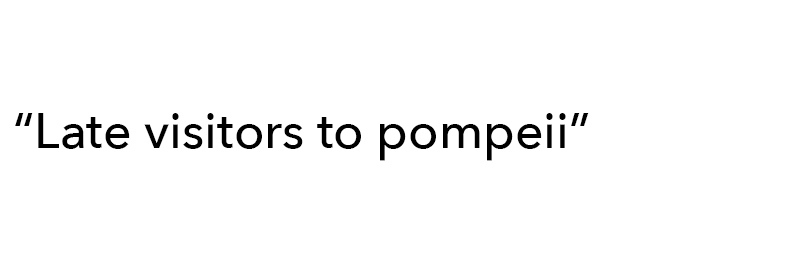
Looking at this painting I am overwhelmed with confusion.
Is it possible that we were already so individualistic in 1931, that our society was already so antisocial and closed?
When a bomb explodes, we do not look at each other, as if we ourselves have nothing to do with it. we are solidly melting in our own egos.
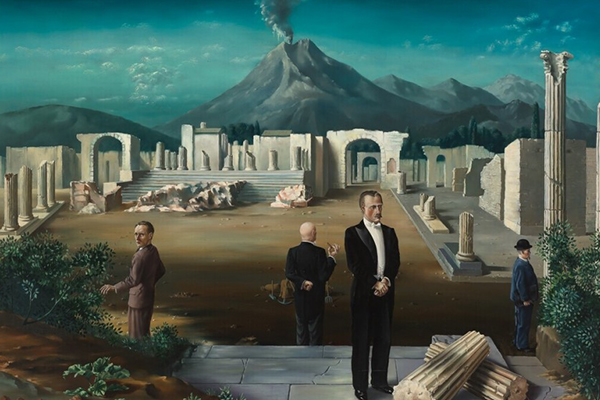
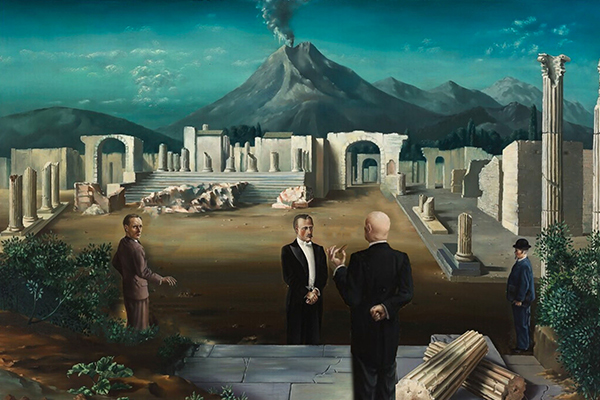
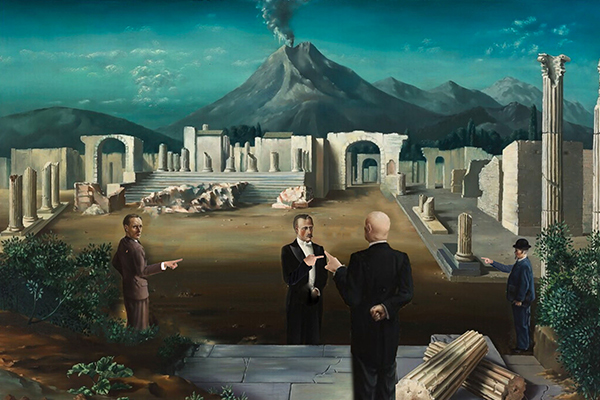
In order to clarify the feeling I got from the painting, I have photoshopped it a bit.
I force the men to look at each other while a volcano erupts behind them.
I force them to no longer ignore each other.
Then I let them point to each other.
I believe that we live in a society in which we constantly blame each other for everything and everything but never find ourselves responsible.
We find it so easy to point to others or say "yes, but I did not do that".
When you see someone falling on the street, there are most of the time only 2 out of 20 people who will stop and help.
When there is a verbal battle or fight we act like we do not hear anything.
Why do we do this !? Why do we turn our backs on situations, why do we find it so scary to get involved in something?
It's so damn easy to blame others, and we turn our backs on our problems. pointing out fingers.. I didn’t do it, he/she did!
Copy
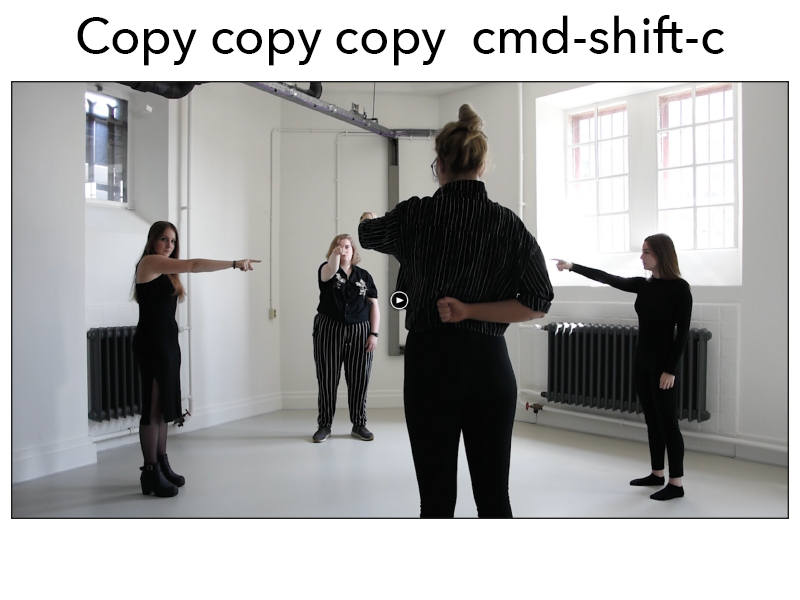
I made a video in this same posture to copy what I created from the painting.
I deliberately did not take a picture because it seemed more interesting to me to keep it alive.
By placing ourselves as static as in the painting, the small movements of blinking eyes and breathing, I copy the alienated and illogical effect of the painting.
Keeping your arm up like this is a punishment in itself.
I (left) am the only one who looks into the camera just as the artist Carel Willink has placed himself in his painting on the left.
I look at the viewer just as Willink looked at the viewer. almost questioning, "Is this what you want?"
I will present the video in a frame with a projector so that it looks like it is a photo.
That way I can create confusion just as I got confused at the original painting.
Test 1 2 3 Test
To further discover what I want with this atmosphere, I have done tests.
I have taken pictures of people who refuse to look at each other.
That is the point that held me so firmly in the painting.
The ignoring of each other and each other’s silence is something unbearable,
this gripped me so firmly that I wanted to translate this into my transformation.
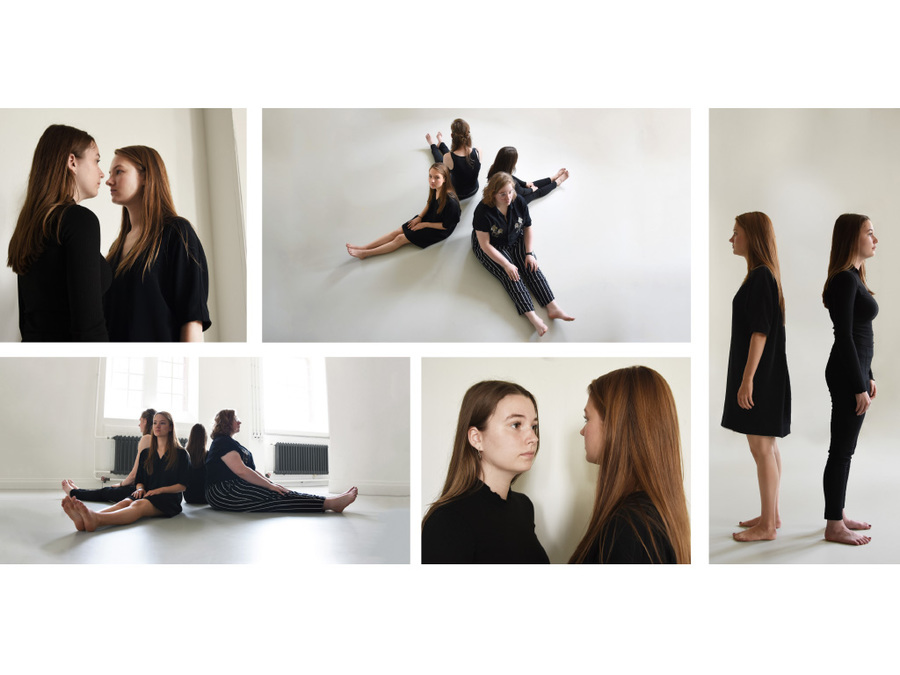
Transform Transforming Transformed
In the end I chose to involve the viewer in my presentation.
I wanted to make the feeling of ignoring appear in my photos.
At first I did not know how I was going to create that feeling in a picture, I wanted to work in the direction of my tests.
Then I came to the insight that i want to ignore the viewer. How annoying will it be to go to an exhibition where the work literally turns its back on you.
Without any studio experience I went into the photography studio and I made pictures of the back of people's head....






Presentation
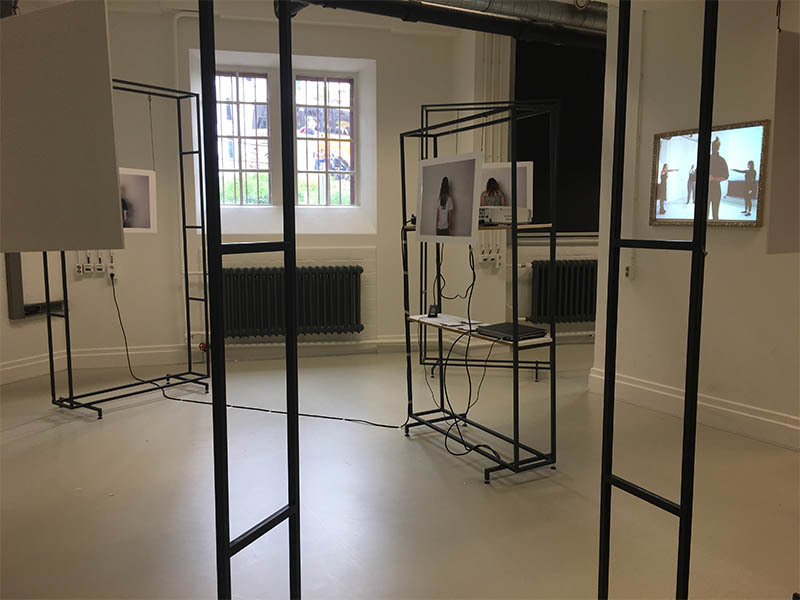
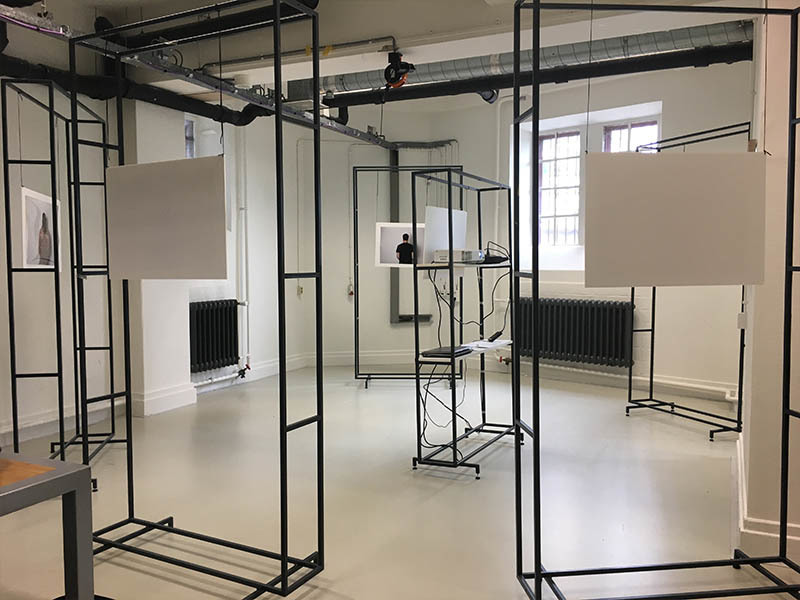
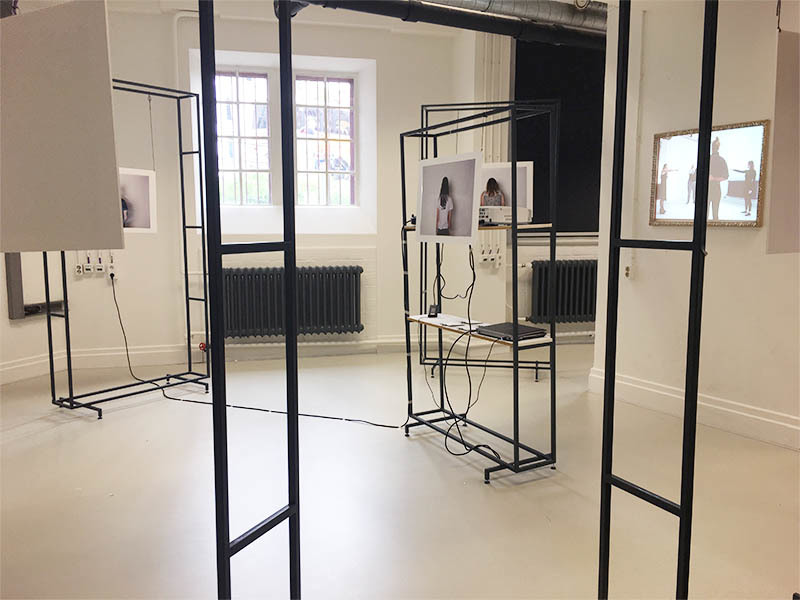
Reflection
In this practice I mainly learned to work freely and work in a very short time.
I was able to pick up on a theme that I have already worked on a bit.
Before this practice I worked in the theme of the relationship between human and nature and human and human.
And now I was able to focus myself at the relationship between human and human in the social field.
I also learned how to work in the photo studio which I found extremely valuable.
I think it is a valuable theme to dive into for me as a future teacher, the social contact and the way we treat each other.
What I regretted is that we learned little theory or practical stuff from the teachers themselves because of the few contact moments,
I hope that this might happen more later. My preference is also in the practice Digital craft, purely because I could let myself go with the flow immediately.
What is the theme I am investigating?a disconnection between human and human
What is my research question?do we accept this?
I also wondered in my research whether this was already happening since the painting dates from 1931.
How am I structuring my research? I work in the indicated steps. I first started to investigate my painting.
After that I made a video, during the making of the video.
I also did tests with photography. In the end I work kind of as a action, reaction, action, reaction.
What tools or methods could I/will I use to conduct my research? See the answer above. I like to work by diving into it and doing it.
What is the foreseen result? When I started this work, I thought I would work it out in a performance (that I would still like to do).
My result, however, is different than expected because I came to new insights during my tests.
What is the difference between my foreseen result and the result which came through the process? See the answer above.
It is good and okay that things change within a process. But to be honest, I could have gone on so many other ways if I had more time.
Is 1. - 6. relevant? Yes it is, we have a lot of criticism on our social level, on communication and connecting with each other in this society.
Digital crafts 3rd year
Critical Making exercise

- Reimagine an existing technology or platform using the provided sets of cards.-
In this assignment I have worked with 2 classmates and 2 students of graphic design.
We looked at the cards with the whole group and shared our favorites.
Then we started making combinations, we came to the challenge:
Create an painful or stressful version of a DIY kit using wood
We wanted to make a DIY kit because we had fun and frustrating memories of DIY kits ourselves.
We chose to mix the roles, so the graphic designers started working with the laser cutter
and we started working on the (graphic)design aspect.
The laser cut plan was designed to be cut on an 4 mm piece of wood, but we used a 3 mm one.
So when somebody would put the plane together the pieces would not completely fit.
Next to that I made a useless manual it says things like (‘click piece one of the wing to piece one and after
that connect piece one mainboard to one till you hear a click’)
When you finally finished putting the plane together and want to make it fly,
the plane would fall apart. In the end, we were able to create a very frustrating product with this group.
Cybernetic Prosthetic
We started our project by researching the artist we discussed in the class of Ivan.
The artist that struck us the most was "Eduardo Kac". Ivan mentioned the dna flower and we did more research about him.
We came on a project of his, where he is creating an artist gene.
This gene was created by translating a sentence from the bible, Genesis, into Morse Code, and converting
the Morse Code into DNA base pairs according to a conversion principle specially developed for this work.
Google translate fails?
So this project made us think about Google translate fails.
When you translate a sentence to another language and then translate it to its original language something different comes out of it.
Sometimes it can be quite funny or poetic. But this was infect our link that made us think about esthetic art that we as human don’t have complete control over.
We wanted to create something that decides and or can speaks for itself.
So first we talked about an idea of a plant that could sing songs when it is happy or sad.
But soon it felt a bit cheesy already.
Schimmelderij
Then we decided that we want to focus more on a organism that makes it own decision with a esthetic outcome.
From the four catagories of organism (plants, animals, fungi and bacteria), the fungus was uniquely and interesting to us.
Fungi or mold also live their own lives and certainly make their own choices. That is why we researched how mold works,
how it grows and how it doesn't grow. In this study, we discovered that mold can be stimulated by heat and delayed or even stopped by cold.
With this information we devised a loop system.
Making the frame
After making the mold, we started designing a frame.
The intention was to really freeze the containers with mold above and below the snowflake.
And giving the bowls above and under the sun extra warmth.
Then the frame would have looked like this:
A lot of mold due to sun - slightly less mold with normal temperature - little mold due to freezing.
The idea of an abstract painting based on mold that forms itself through a rhythm system
in heat and cold release seemed very beautiful and incredibly interesting.
For example, the rhythm in this system could be linked to music and that's how something very unique comes about.
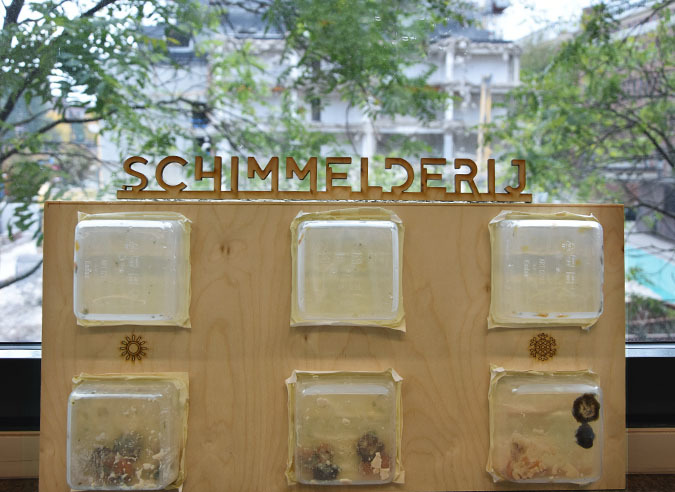
Reflection
I now know how mold works and that you can even catch mold with the bacteria in the air.
I would have liked to find out which fungi gives what kind of shape and color
and whether you can create a kind of mold-book in this way with foto's and "how it's made".
In the process however, I found out that certain smells were very intense and that a solution should be found for the smells
if this project wil ever have a follow-up.
This project brought me new ideas and this was certainly also due to the feedback that was given after the presentation.
We got so many opportunities with our subject back from the group, such as the sample book of fungi/mold and artists that mimic fungi.
These kinds of insights give inspiration and ensure that this project does not close with a closed door but with more open doors to different possibilities.
From Devices to systems

From Devices to systems Sensors and sensitivity training.
You will open the 'black box' of a technical device in an anatomical machine learning lesson,
and you will also dissect and analyse a concrete instance of a complex system at work. How do devices and networked systems interact?
Document and research all of the parts, how they work, where they come from. Redesign and add new circuits.
Put it back together with a new function and added sensor feedback loops. The basic electronics should be fully functional.
Last year in winter, Michelle (my friend and classmate) fell in love, with a copier.
She started scanning and by accident she moved one of her prints on the glass.
So than she bought her own printer (Josephine) and now she accepted me in her relationship with Josephine.
For this assignment we have experimented with the copy machine and scanner.
Michelle had already gained some experience and also let me experience this same amazement with this machine.
We went to the dark room and tested how light influenced a print.
After that we tested how to catch movement on a print.Ideally, we wanted to make 3D (full body)scanner out of Josephine.
After our test, we decided to open her up. We wanted to see what happened inside of her while she was scanning.
And at one point, we succeeded. Until Michelle, murderd Josephine with impatience an brutal strength.
We tried to remove the scan part of the printer from the print part of the printer but unfortunately we killed te most important communication belt.
May Josephine rest in cyberspace.
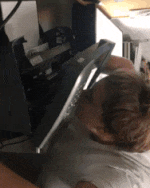
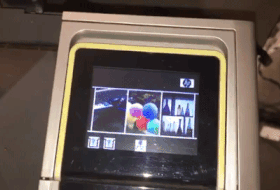
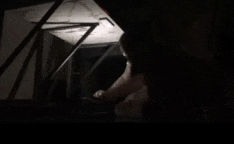
Although we did kill Josephine, she taught us a lot.
In this project I found out that I have not finished with the world of scanners and printers.
I want to continue investigating the possibilities that exist with scanners,
and I especially want to create that 3d (full body) scan in one way or another.
My plan is to arrange a separate scanner and printer that communicate together.
Essay
My craft and my approach are divided into two categories,
one is my own visual work and one is my approach as a teacher or educator.
Now it is fortunately pretty close the both approaches but it is still difficult to describe them in one.
During my study in Fine Art & Design Teacher Training at the WDKA, I focus on the meaning of art education,
and what role I can play in this. Who do I want to be as an educator and what do I find important to teach
(and to learn from) to the future generation. I also have a lot of interest in museum education, which is another approach.
All in all, I find art education very important, because it was very important to me.
In my time at Grafisch Lyceum Rotterdam I really changed as a person not only because I grew up and grew older but also because
I went into a world with people who challenged me in a creative environment full of influences and critical inquiries.
I sincerely believe that in this environment I have really found myself and that I have really learned to understand myself.
In art education you learn and develop multiple skills and personal development during challenging creative projects.
Things like, imagination, Reflecting, observing or analyzing, expressing yourself or express yourself.
You learn about the world within the school and the world beyond school, in the past and present.
Connecting disciplines and observing the behavior and attitudes of the people and / or pupils around me is something that interests me.
I've always done it unconsciously, just looking at people and wondering why they do what they do and what they might think in all those
thousands of millions of heads you see passing by everyday every week. Learning to read behavior and learn to understand behavior is
something that fits very well within my major. These interests also make me personally very critical and reflective to myself because
I am always a person who I can read and observe in my own behavior.
In addition, I find it important to continue to develop in my own visual language. The tools that I am working on a lot now are photography,
illustrating, the digital world, writing, materials research, and painting but preferably in large format. In my own work I am very busy with
concept formation and narrative work, I do in combination with observations and analyzing people's behavior and demands.
If I need a tool that I do not yet know or master, I will look for ways to learn this, through people who already master it or via the internet.
A very important tool is the tool of discovery and curiosity. I am someone who likes to go out for inspiration.
In digital craft, for example, I really dived in by going to Cinekid and the Exposition of Ryoji Ikeda. With these kind of trips I can let myself be immersed
and really come into the vibe I want to be in. At these exhibitions I have seen digital craft in a finished form, especially cinekid appealed to me because it was super interactive.
You do not need much to amaze people, your product does not have to have a complicated concept, sometimes the visitors amaze you more with their experiences and behavior towards the interactions.

In digital craft, I try to challenge myself and to immerse myself in the automation of the current world and the significance of this as a human being.
Working with electricity is fairly new for me but in my opinion, it is very important to get involved in this and take part in art education.
I think it's important to be up-to-date myself so that I can treat, research and question these kinds of subjects with my students.
Digitization is something that applies to everyone. I myself experienced at a rapid pace how the smartphone originated and has grown,
just like a part of the computer revolution. We used to have a computer in the house that I and my sister were allowed to use every day for max up to an hour,
nowadays everyone has their own computer and we use mini-forms such as the smartphone all day long.
These kinds of changes and developments and their effect on us as a human being is a very interesting thing to me.
The teenagers of today (and also young adults as myself) live in a bizarre world where everything goes very fast, I wonder what kind of effect this has and how it affects us.
The digital world seems to be one big playground.
There are no limits anymore: on the computer one can watch television and the mobile phones are getting bigger and bigger,
so that these can also function as a TV with apps like Netflix. Your best friend is your smartphone nowadays.
And I want to immerse myself in this paradise like playground of the digital world full of codes, robots and surprises.
We live incredibly digitally but if you provide me with a device (like the Blackbox assignment) I would not understand how it can work as it works.
So, on the one hand it is very logical and something that we cannot think away but on the other hand we are also pretty far
away from this digital thing because as an individual we do not immediately know how such a computer does its job.
As for my concrete examples of contemporary practitioners.
I've been obsessed with Melanie Bonajo's work for a while,
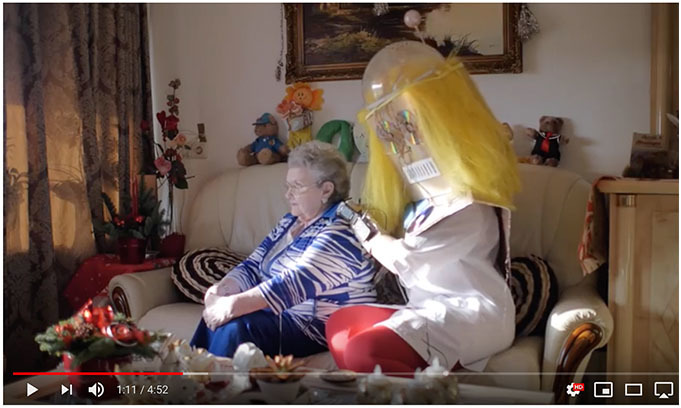
her approach and how she takes you into stories and visions I find enchanting.
To mention a concrete example, I want to link to the videoclip from one of her films. The song is called "Secret Robots"
in which Melanie is turned into a robot she moves like a robot and acts like a robot and in this way, she experiences what it is like to live as a machine.
This clip made such an impression on me that I literally teared up while watching this video.
The image that she creates with this is very intense and confronting to me, the lonely elderly who fully accept that people no longer
want to pay attention to them in their own physical attention and they are now entertained and have to go through
life with robots or mechanical machines to take away the loneliness. Can robots take away solitude? I wonder…
After a conversation with Shailoh I was guided to the work of Pilvi Takala.
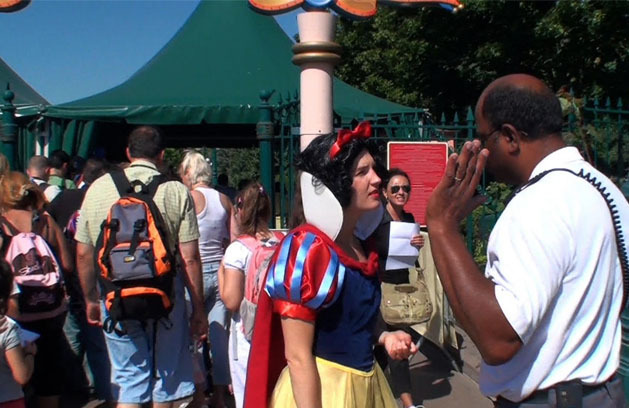
She is a great example and similar to how I like to work.
I also like to ask questions and try to put myself in different roles in different ways in order to be able to experience, observe and analyze in several ways.
Pilvi Takala investigates the social behavioral mechanisms within a specific situation, community or place. After this observing phase,
a subtle intervention ensues whereby, as a relative outsider, she calls into question the unwritten rules of behavior that are considered self-evident and makes the hidden reality visible.
What I find interesting in digital craft is the fact that we are so incredibly used to technologies in our environment.
We find it quite normal that a light in a scanner reads and digits your documents, that it can translate something 3d into 2d.
We do not think it's strange that we can make videocalls, that we can see and hear each other while we are actually miles apart.
But how does it work? How can we see each other while we are so far away from each other? We are so used to it when we do not even know how it is possible and we accept that.
The wow effect is gone and sometimes it is good to take a step back and ask questions about things that seem very normal now.
I just really adore and love to ask questions I always did, and to be honest, I was punished as a child for the fact that I asked so many questions.
It was seen as a fear of failing and insecurity and also as an annoying smart ass. But I think it's important to stop,
take a step back and take another look at things and not just accept that things are the way they are.
As a teacher I find it important that I have experienced many different things to be able to say for myself what I think is important to pass on.
That is why I became so enthausiastic about digital craft, which gave me the chance to discover how we deal with the digital life of 2018.
The fact that we no longer have astonishment for things that contain amazement is something that I will definitely take with me in my teaching.
Cartography of Complex Systems & the Anthropocene
mapping assignment
In this assignment I want to dig into the world of the scanner.
I want to know how the scanner works and I especially want to compare what the big
differences are between a scanner and a digital camera.
To be able to do this properly, I first have to analyze the scanner
and a digital camera itself. I go to the web and talk to professionals about these 2 items.
scanner
The basic principle of a scanner is to analyze an image and to process it in one way or another to a digital image.
You can then change or improve the image, print it or use it on your web page. I really do think this is incredibly special,
it is a pity that we as humans living in 2018 no longer see this as something special.
The idea that I can place an object on a glass plate, a light then scans it and the thing that I just had in my hands
suddenly appears on my screen is fascinating right!?
Parts of a typical flatbed scanner include:
• Charge-coupled device (CCD) array
• Mirrors
• Scan head
• Glass plate
• Lamp
• Lens
• Cover
• Filters
• Stepper motor
• Stabilizer bar
• Belt
• Power supply
• Interface port(s)
• Control circuitry
These are the steps a scanner goes through when a document is scanned:
• The document is placed on the platen glass and the lid is closed.
The inside of the cover in most scanners is flat white just like my scanner.
The cover offers a neutral background that the scanning software can use as a reference point for determining
the size of the document being scanned. With most flatbed scanners, you can remove the cover to scan a voluminous object,
such as a page in a thick book.
• A lamp is used to illuminate the document. This goes at a slow pace.
• The complete mechanism (mirrors, lens, filter and CCD array) forms the scan head.
The scan head is moved slowly over the document by a strap attached to a stepper motor.
The scan head is attached to a stabilizer bar to ensure that there is no fluctuation or
deviation in the pass. Pass means that the scan head has completed a full scan of the document.
• The image of the document is reflected by a slanted mirror to another mirror.
In some scanners there are only two mirrors while others use an approach with three mirrors.
Each mirror is slightly bent to focus the image that it reflects on a smaller surface.
• The last mirror reflects the image on a lens. The lens focuses the image through a filter on the CCD array.
The filter and lens arrangement vary based on the scanner. Some scanners use a three pass scanning method.
Each pass uses a different color filter (red, green or blue) between the lens and CCD array.
After the three passes are completed, the scanner software assembles the three filtered images into a single full-color image.
On your computer, you need software, called a driver, that knows how to communicate with the scanner.
My scanner has the Canon MP Navigator EX program that works as the driver. So This is the way my scanner communicates.
A conversation between the computer program (driver) and the scanner which is linked via a USB cable to my computer,
this makes it possible to let those two work together.
Without the driver my scanner won’t do a thing, so I need these two devices.
How does a camera (obscura) work
The Camera Obscura is an ancient optical device.
In its most basic form it is, quite simply, a dark room with a small hole in one wall.
On the wall opposite the hole, an image is formed of whatever is outside. This image is upside-down (inverted) and back to front (laterally transposed).
The size of the hole has a great effect on the picture that is being projected. A small hole produces a sharp image, which is dim, while a larger hole produces a brighter picture which is less well focused.
This happens because light travels in straight lines, a property known as the rectilinear propagation of light.
The big difference between a camera and a scanner is the fact that a scanner makes the photo with a moving light.
This means that the photo is always made with a kind of super slow shutter speed. Because the scanner takes the picture from the left to the right
very strange distortions can occur when you move during the picture taking. With a camera the picture is made in the whole of the image,
if you use a slow shutter speed here you also see movement only in the whole of the image and not from left to right.
A scanner can be seen as a camera that always flashes since a scanner does not record anything without its own light source,
a camera can shoot without its own light. All in all there is a fair amount of difference between the two, but there are also many similarities and you will see that in my elaboration.
Final project
I became fascinated with the wow and ahh effect in this practice.
This final project started with the blackbox assignment in which we separated a device (Josephine).
We went to the dark room and tested how light influenced a print.
After that we tested how to catch movement on a print.Ideally, we wanted to make 3D scanner out of Josephine for a full body picture.
After our test, we decided to open her up. We wanted to see what happened inside of her while she was scanning.And at one point, we succeeded.
Until Michelle, murderd Josephine with impatience an brutal strength.
We tried to remove the scan part of the printer from the print part of the printer but unfortunately
we killed te most important communication belt.
May Josephine rest in cyberspace.
So I continued with the printer and scanner.
I approached them separately, first an investigation into the scanner and then the printer.
In the previous assignment we had experimented with light and movement, but that full body 3d scan never succeeded.
This became my new focus point how to
extend the limits with this scanner.

I started testing how far I could go by first working with the flatbed scanner and continuing with light and composition.
I had played with a scanner before, but the more you experimented the more new things come out.
I used collage techniques with the scanner by laying paper on it with cutouts, which I then lay down myself on.
I also tested how far the scanner can "see" with the light. What comes in the picture when, and how does this come into view, sharp or out of focus.
Then the part of the 3d or a full body scan came up.
I first tried to do this in puzzle pieces on the scanner.
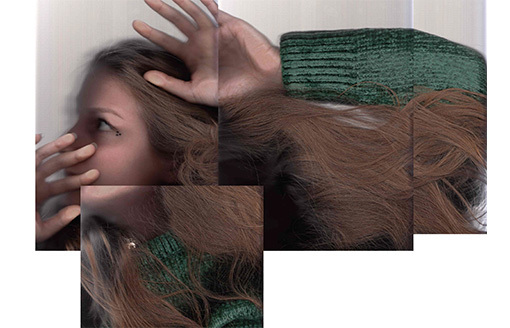
Still, this was not yet what I had in mind, I still rememberd the feedback of the class when we presented our blackbox assignment...
and the remark to build a camera obscura with it and that's how the camscanner was born.
I build a camera obscura, the first one as a prototype and I have experimented with this first.
I have never worked so deeply in the theme of photography so I needed help.
I found that help with Menno, he taught me a lot about the working of a camera.
We calculated the focal length and so I could make a new version of my camscanner.
tools
The camera is made of tape, cardboard and a magnifying glass as lens.
the tools I have used are working with a lasercut plan for the cardboard camera.
Working with software that communicates to each other, this differs in mac and windows.
Because I used to find it so cool to have my scan printed immediately without knowing what exactly I had scanned,
I wanted to add this "woahhh" effect to my camscanner. The wow element in direct printing.
To connect my scanner with a separate printer, I had to let the software communicate,
again I had no experience with this and I needed help, I found that help with Brigit in the interaction station.
In the end I managed to connect the printer and scanner and my scanner can immediately give instructions to my printer yay!
presentation
I presented my Camscanner in this way because I did not want to keep this wow and ahh effect to myself.
I have covered a project space with dirt bags and made an installation in this way. In the studio you find the scanner and the camera and a little instruction folder.
On the laptop you can immediately click print after you made the scan and then the scan is forwarded to the printer outside the studio.
This way you connect the viewer with the maker in a super fun way.
I did not want to hang my photos as a presentation and only tell what I did.
My goal is to take people into the research and let them experience it for themselves.
They are part of my project and presentation infect they are my presentation.
My presentation is not the space and not the photos that came out of it,
but the collaboration of these two components and the visitors who create the work with my tools.
Question I asked is
how can we re-astonish ourselves about something that has already melted into our system and is considered normal
You do not have to discover the new wheel. you can find a new world in something that already exists by looking at it again.
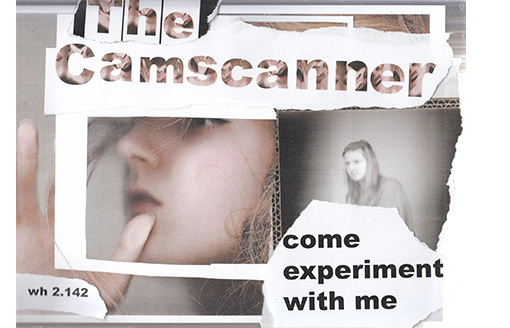
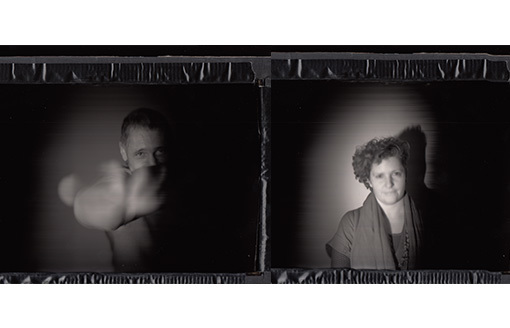
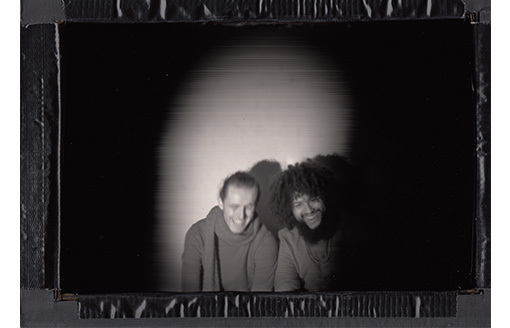
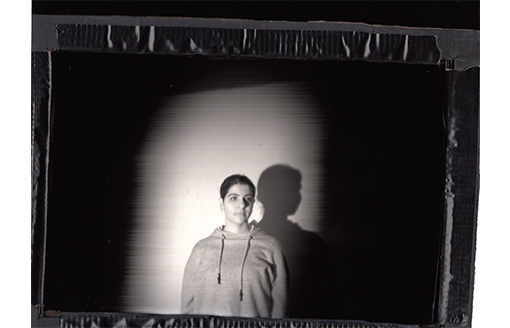
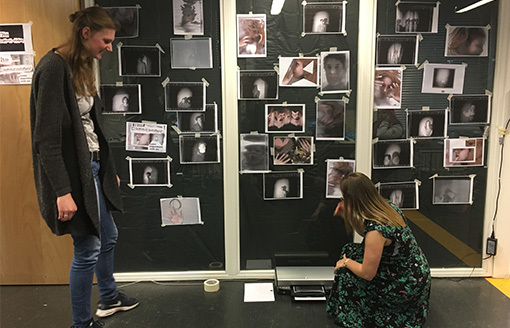
reflection
Just like in the 2nd year, I have been able to enjoy this practice again.
Although it was a squished over full schedule for our department,
I found a way to get the most out of this practice. I am very happy with what I have done and what I have learned,
I needed a theme or research that I could deepen in. Hopefully our department
will adjust the schedule in the future because if I am honest this was almost impossible to do for us...
I have thrown a lot of leisure time and time from my major in the practice to get the best out of it.
All in all, I have learned to make choices and deal with time pressure and a difficult schedule.
I know that I have high demands on myself and that this is not always a good thing,
but I also know that I continue to challenge myself this way and I learnd so much.


